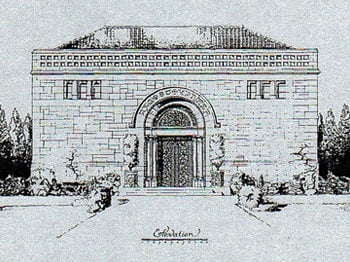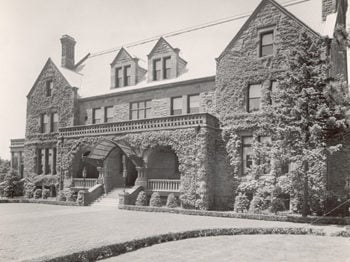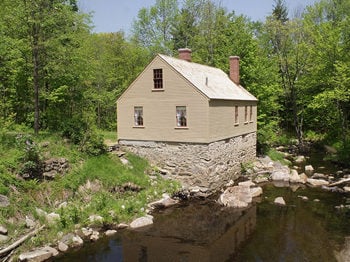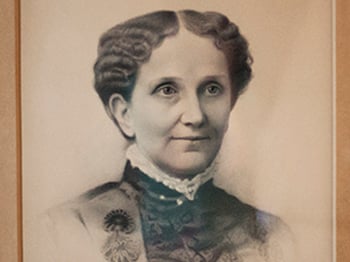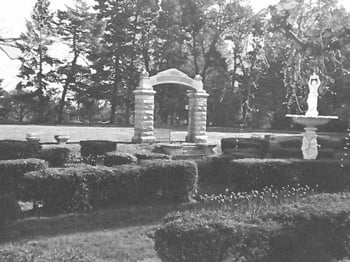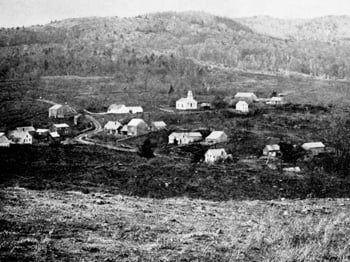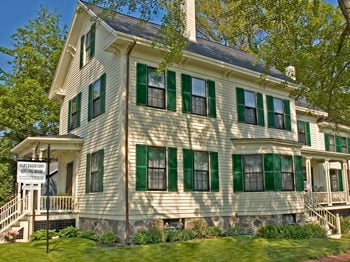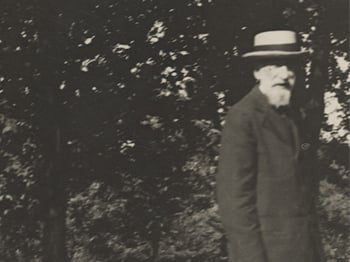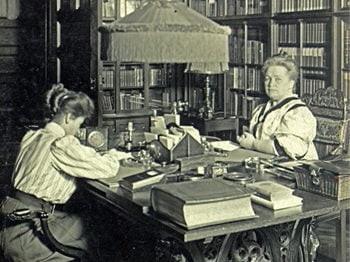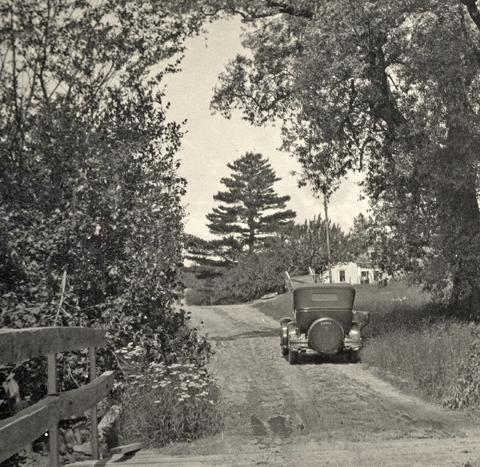 WHEN MRS. MARY BEECHER LONGYEAR drove on July 7, 1920, straight from Barton, Vermont through Rumney, New Hampshire and along the wooded road toward North Groton, her mission of preserving the historic houses in which Mrs. Eddy once lived was launched. As she approached the secluded hamlet of North Groton, she met a strong farm woman driving calves before her. “Do you know where Mrs. Patterson (Mrs. Eddy) lived in this hamlet in the 1850s?”, Mrs. Longyear inquired. “The house stood by the stream, but was moved forty years ago and is just this side of the cemetery,” the woman answered (The incidents recorded in this article are largely drawn from the diary which Mrs. Longyear kept almost continuously from 1906 to 1931).
WHEN MRS. MARY BEECHER LONGYEAR drove on July 7, 1920, straight from Barton, Vermont through Rumney, New Hampshire and along the wooded road toward North Groton, her mission of preserving the historic houses in which Mrs. Eddy once lived was launched. As she approached the secluded hamlet of North Groton, she met a strong farm woman driving calves before her. “Do you know where Mrs. Patterson (Mrs. Eddy) lived in this hamlet in the 1850s?”, Mrs. Longyear inquired. “The house stood by the stream, but was moved forty years ago and is just this side of the cemetery,” the woman answered (The incidents recorded in this article are largely drawn from the diary which Mrs. Longyear kept almost continuously from 1906 to 1931).
On Mrs. Longyear went past the stream with a broken-down sawmill on one side, and along a road leading past an all-but-abandoned church, to the grey, dilapidated house standing on a hilltop framed by magnificent blue mountains. After making many photographs, Mrs. Longyear was about to take the shortest route back to Concord, when she felt a strong urge to talk again with the woman she had met earlier. She learned that the woman’s husband had known Mrs. Patterson well and her son was working on the road over which she had just come. Mrs. Longyear returned and hailed the son, Fred Kidder, who showed sincere interest in her plans to restore the Patterson house.
He assured her the house could be moved and she asked if he would sell her a parcel of land on which to place it, and take charge of moving it. Mr. Kidder told her he was too busy to move the house, but “he would do his part by building long and wide roads that the people from the whole world (as you say) may come and see this place.” He was the son of Daniel Kidder whom Mrs. Patterson helped with his studies as a boy in North Groton. Daniel was now living in Rumney. Although Mrs. Longyear did not find him at his Rumney home, his daughter pointed out the house in Rumney Village opposite the schoolhouse where Mrs. Patterson had lived.
“They found a neat cottage with a magnificent view,” to use Mrs. Longyear’s own words. Mrs. Ver H. Avery greeted Mrs. Longyear at the house and assured her that Mrs. Patterson had lived here two years and that the place had a fine spring of water which often supplied the neighbors. She said she wanted to sell the place and together they drove to a potato field where a far-reaching transaction was made, with James Bonnar, the trusted chauffeur, as witness. She bought the place for $1500, $500 to be paid when the deed was delivered, and the balance in October. Thus Mrs. Longyear acquired her first historic house.
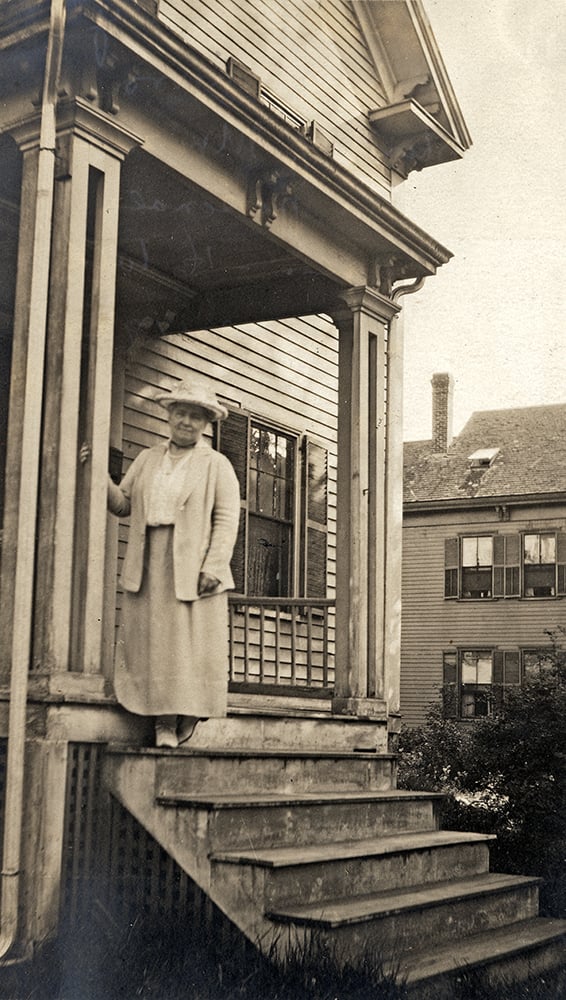
Three days later on July 10, Mrs. Longyear went to Lynn to search out the house where Mrs. Eddy had received her revelation. The attendant at the Christian Science Reading Room sent her to one who might know, and at length Mrs. Longyear and her companions came to the corner of Broad and Oxford Streets, where Mrs. Patterson had slipped on the ice. A Mrs. Dearing had a millinery shop at that corner and she directed them to a number of early students living in Swampscott. Eventually they found Paradise Road and the attractive house belonging to Samuel Putnam Bancroft, one of Mrs. Eddy’s earliest students. The house was easily identified by a “B” on the eaves. Mr. Bancroft had rented the house and the tenant gave Mrs. Longyear the business address of Mr. Bancroft, Willis H. Low Company, opposite the Rowe’s Wharf in Boston. She lost no time in calling on Mr. Bancroft, whom she found at a very busy moment, and greeted him with, “I want to thank you for the help you were to Christian Science in those early days .” He gave her a hearty handshake and said, “Well, those were busy times. We named the Cause, Christian Science. It used to be called metaphysical healing.” “He took time,” Mrs. Longyear noted in her diary, “to show me a picture of Mrs. Eddy that he had in his safe and promised to see me next week.”
Just three days later, on July 13, 1920, Mrs. Longyear and her daughter, Judith Lyeth, and two grandsons, with faithful James at the wheel, set out for Amesbury to locate the Squire Bagley house in which Mrs. Glover (Eddy) took refuge with Miss Sarah Bagley in 1868. Mrs. Eddy resumed the name Glover after her divorce from Dr. Patterson. Mrs. Longyear inquired of an old lady who said she remembered Mrs. Glover, adding, “She was a very handsome woman, too.” With her directions, they had no difficulty in finding the Bagley house and were met at the door by Miss Gunnison, former helper of Miss Sarah Bagley, who had been left the house jointly with Richard Kennedy, a distant relative and a one-time student of Mrs. Glover in this house. It was a pleasant home, maintained much as it must have been when Mrs. Glover was there.
Two days later Mrs. Longyear and her daughter Judith motored to Stoughton in search of the Crafts and Wentworth houses. Inquiring at a garage, they were directed to a drug store and with a “puzzle” for directions they set out for the Crafts house, arriving there with the help of “nursemaids, delivery men, carpenters on a roof and others along the way.” They found the current occupant of the Crafts house knew little of her earlier relation, Hiram Crafts. Showing Mrs. Longyear the Crafts genealogy, she remarked that the book made “awful good reading . . . Crafts-Hiram-Hiram-Hiram-why there were lots of them. Good gracious here is one Hiram with twelve children . . . You should go to Mrs. Wentworth’s, she knows more than I do about this.”
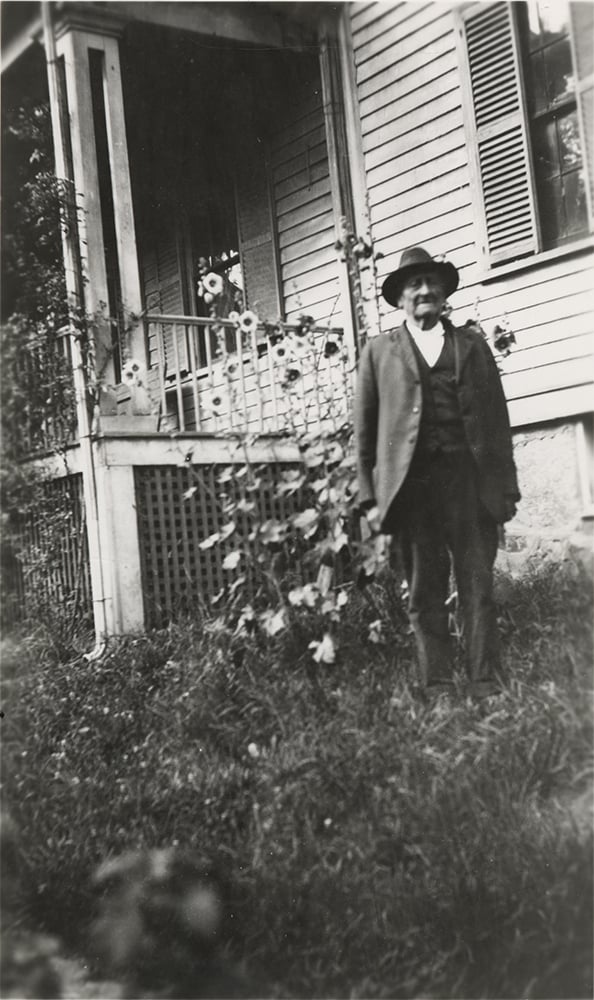
After further difficulties the Wentworth house was located and someone pointed to the two uppermost windows saying, “That is where Mrs. Eddy wrote her first book.” Apparently Mrs. Longyear made no effort at that time to purchase this house.
On July 16, 1920, the anniversary of Mary Baker’s birth, Mrs. Longyear records that she had just bought the “Revelation House at Swampscott.” Its purchase had been arranged by her superintendent, Mr. Noyce, while she was abroad. A few days later on July 23, 1920, she met Samuel Putnam Bancroft at his office at four o’clock, “a fine looking, well-dressed man,” who, as a young boy, had been introduced to Christian Science by his cousin, Mrs. Daniel Spofford. They drove to Lynn, passing along the Lynn shore drive, so well known to Putnam Bancroft as a boy, to the house where Mrs. Glover (Eddy) and Richard Kennedy began their work of teaching and healing. From Jesse H. Sutherland, who had known Mrs. Eddy well, they verified the place of Mrs. Eddy’s accident and then drove to Swampscott and the Bancroft house. Crossing the street to the house she had bought, Mrs. Longyear went into the garden at its rear, and among the hollyhocks, she found George Newhall, the former owner, who was able to dispel any doubts about the “Revelation” house being the right one. Mr. Noyce had bought it for her sight unseen. Mr. Newhall recounted the incidents of February 3 and 4, 1866, when as a milkman he was making daily rounds of the houses. He was sent two miles in bitter cold weather to tell the parson that Mrs. Patterson was dying. Mr. Newhall had full details of her condition. A day or two later, when delivering milk again, a neighbor told him of “the miracle” and that Mrs. Patterson was up and well. To Mrs. Longyear he added, “I guess I am the only man who knows the truth of it on earth.” The milkman of those earlier days had become the owner of the house which Mrs. Longyear purchased.
In November, 1920, Mrs. Longyear secured the North Groton property which she first visited earlier that year.
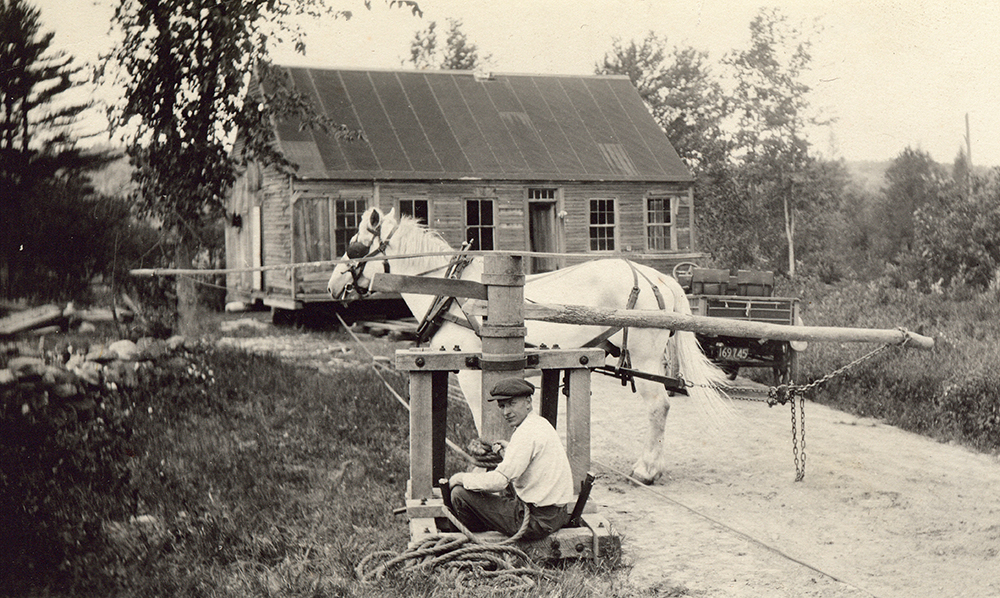
The purchase of the Amesbury house, the last one acquired by Mrs. Longyear, came about in an interesting way. Mrs. Longyear had visited the house three times and felt that, if it was right for her to have it, it would come to her. The actual acquisition of the house followed a dinner in the Longyear home early in 1922 when C. Lothrop Higgins was a guest. Mr. Higgins had an exclusive specialty shop on Boylston Street and had frequently provided beautiful bonnets and accessories for Mrs. Eddy’s gowns. He and Mrs. Eddy had been good friends. At dinner, the Amesbury house was casually mentioned and Mr. Higgins said, “Do you know the house is being sold at auction tomorrow?” Immediately Mrs. Longyear asked him to bid on it for her. At one time Mr. Higgins had lived in Amesbury and as a boy had been healed by Miss Bagley. He knew Mr. Wadleigh to whom Richard Kennedy had left the house; Miss Gunnison had willed her part to Kennedy, and Wadleigh was now selling it at auction.
This was on the eve of Mr. and Mrs. Longyear’s departure for England to attend the wedding of their youngest son, Robert, who was then Vice-Consul of Haiti. They returned on April 14, 1922, and on May 28, Mr. Longyear passed away. Mrs. Longyear was notified on June 27, that the Amesbury house was hers, but for the next few months she was in Marquette, Michigan, on the Longyear farm near Lake Huron, with her children. She was also performing her duties as executrix of Mr. Longyear’s will.
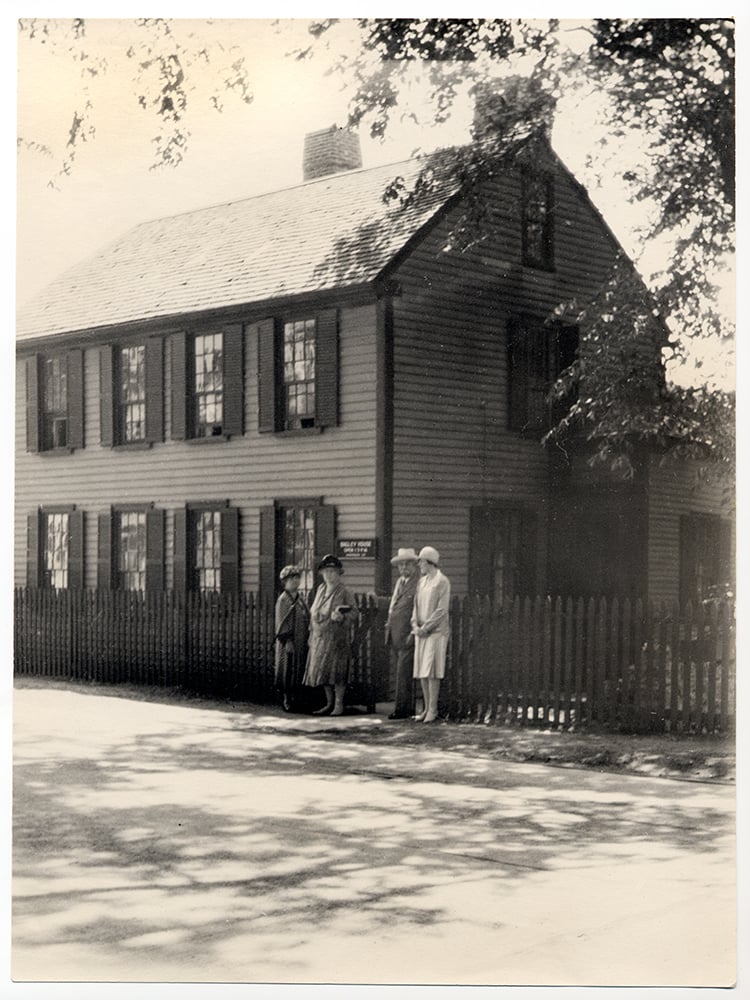
She resumed her work of renovating and refurnishing the four houses early in 1923, and for several months she was tireless in carrying out plans to open them to the public. At Amesbury, Mr. Higgins was a great help to her in separating, selecting, and disposing of the accumulations of the active Bagley family over a hundred years. The history of this house and the variety and richness of its content when acquired by Mrs. Longyear, is vividly told in Mrs. Longyear’s little book, “History of a House.” The house contained furniture in abundance and a number of pieces were sent to the houses in Rumney and North Groton. Mrs. Longyear enjoyed restoring the old houses, and in all her journeys she took with her a friend or a member of the family, thereby turning these restoration excursions into something of a holiday, reflecting her perpetual joy in this work.
By mid-1923 the end was in sight. On July 8, 1923, the Swampscott house received its first guests, among whom were Mr. and Mrs. Edward Everett Norwood of Washington and their daughter. About two months later, on September 4, the Amesbury house saw its first guest registered. Custodians were installed in the houses and guests were welcomed.
After Mrs. Longyear’s passing in 1931 , custodians were retained at Swampscott, Amesbury, and Rumney but the houses were not generally opened to the public for a number of years. On request they could be visited. By the mid-thirties repairs and painting were needed, and in some, heat and electricity. The first house to be reopened permanently to the public was Swampscott on February I, 1935. Rumney was reopened in 1937, Amesbury in 1950, and North Groton in 1957. In 1961, the Wentworth house at Stoughton, which Mrs. Longyear visited in 1920, came to Longyear as an anonymous gift. It is now the fifth historic house maintained by Longyear Historical Society.
More houses acquired
In 1961, the Wentworths’ former home in Stoughton, Massachusetts, where Mrs. Eddy stayed from 1868 to 1870, was offered to Longyear Museum as a gift. The Museum gratefully received the house and restored it to the way it had looked when Mrs. Eddy lived here.
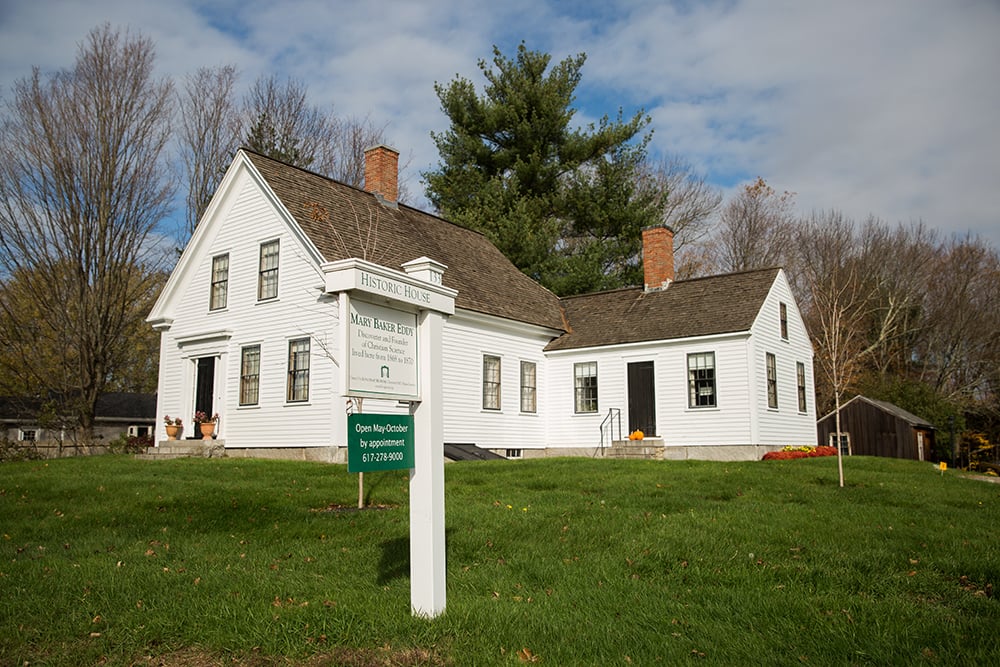
In 1985 Longyear Foundation received, as a gift, the house at 62 North State Street in Concord, New Hampshire, where Mrs. Eddy lived during the pivotal years from 1889 to 1892. Here she worked on the 50th edition of Science and Health and on Retrospection and Introspection. In keeping with changing tastes, the exterior had been painted a stark white. It has recently been restored to the vivid colors Mrs. Eddy would have seen there.
In 2006, special donations to Longyear Museum enabled the Museum to purchase from The Mother Church Mrs. Eddy’s former home on Broad Street, Lynn, Massachusetts. It was here that she completed and published the first edition of Science and Health. Over the years this house, too, had been repainted — in this case, gray. Today, it has been restored to the brighter color scheme Mrs. Eddy would have known.
Also in 2006, thanks to special donations, grants, and gifts, Longyear Museum was able to purchase from The Mother Church Mrs. Eddy’s former home at Chestnut Hill, Massachusetts. Thus, the place where the Leader of Christian Science inaugurated The Christian Science Monitor has been preserved for generations to come.
Notes
For more detailed information about the various houses see History of a House by Mary Beecher Longyear; Mary Baker Eddy and the Stoughton Years by Kenneth Hufford; The Birthplace of Christian Science and The Rumney Years by Alma Lutz; Quarterly News published by Longyear: Vol. 2, no. 4; Vol. 3, no. 1; Vol. 5, no. 4. Available at Longyear Historical Society.
This article was adapted from a piece originally published in the 1970 Summer Quarterly News.
